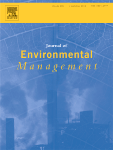Ver ítem
- xmlui.general.dspace_homeCentros Regionales y EEAsCentro Regional Mendoza - San JuanEEA MendozaArtículos científicosxmlui.ArtifactBrowser.ItemViewer.trail
- Inicio
- Centros Regionales y EEAs
- Centro Regional Mendoza - San Juan
- EEA Mendoza
- Artículos científicos
- Ver ítem
Exhausted grape marc and organic residues composting with polyethylene cover: process and quality evaluation as plant substrate
Resumen
In Argentina, wine production is one of the most important economic activities, producing a large quantities of organic wastes. Composting is a viable alternative to treat these residues, with the possibility to obtain high-quality products. The objective of the present study was to evaluate the effect of the addition of goat manure, leaves from garden raking and alfalfa to exhausted grape marc and the influence of plastic cover on the composting process
[ver mas...]
In Argentina, wine production is one of the most important economic activities, producing a large quantities of organic wastes. Composting is a viable alternative to treat these residues, with the possibility to obtain high-quality products. The objective of the present study was to evaluate the effect of the addition of goat manure, leaves from garden raking and alfalfa to exhausted grape marc and the influence of plastic cover on the composting process and the quality of the finished product. Composting was carried out in turned piles in a total randomized design. Temperature, moisture, pH, electrical conductivity, micro and macro elements, biological parameters, stability and structure were determined with the goal to assess product quality. Mixture compost presented higher macro and micro elements content (especially P, Mn and Zn) than grape marc compost. Plastic cover showed no significant effect on physico-chemical parameters, while microorganisms were affected, with higher cellulolytic and nitrifying content in uncovered piles. In all composts, parameters indicated stability and no pathogens (Salmonella sp.) were detected. Pot assay with Lactuca sativa suggested that all compost revealed adequate substrate quality, with higher plant biomass values than commercial substrate and sand (Control), even with fertilization. Mixture compost showed significantly higher biomass and nutrient absorption values relative to the remaining evaluated substrates, suggesting that the use of goat manure and leaves added to exhausted grape marc, as raw material resulted in higher compost quality. All together indicated that the use of polyethylene cover negatively affect microorganisms content and a higher diversity of organic residues composted would result in higher microbiological activity and nutritional grade product.
[Cerrar]

Autor
Funes Pinter, Mariano Ivan;
Fernández, Ana Sofía;
Martinez, Laura Elizabeth;
Riera, Nicolas Iván;
Fernández, Marcela;
Aguado, German Dario;
Uliarte, Ernesto Martin;
Fuente
Journal of Environmental Management 246 : 695-705 (September 2019)
Fecha
2019-09
Editorial
Elsevier
ISSN
0301-4797
Formato
pdf
Tipo de documento
artículo
Palabras Claves
Derechos de acceso
Restringido
 Excepto donde se diga explicitamente, este item se publica bajo la siguiente descripción: Creative Commons Attribution-NonCommercial-ShareAlike 2.5 Unported (CC BY-NC-SA 2.5)
Excepto donde se diga explicitamente, este item se publica bajo la siguiente descripción: Creative Commons Attribution-NonCommercial-ShareAlike 2.5 Unported (CC BY-NC-SA 2.5)

